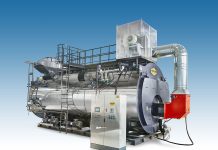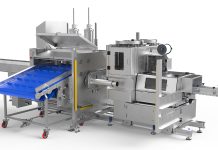
Bread quality parameters
Bread quality parameters were significantly affected by individual enzyme addition, except when LAC was used. TG diminished loaf specific volume and provided a finer crumb structure. Samples containing GO, on the other hand, showed a greater height/width ratio and a more elastic and compact crumb structure, while those with added AMYL, XYL, and PROT led to better shape, greater specific volume and void fraction of loaves as compared to bread without enzymes. Significant interactions between TG and all other enzymes except GO were proven. The addition of LAC to samples containing TG produced marked changes in the crumb structure while AMYL, XYL and PROT exhibited a significant anti-staling effect (Fig. 1) and elasticity (Fig. 2).) Furthermore, TG and PROT demonstrated a significant synergistic effect both on the height/width ratio as well as the loaf specific volume (Table 1). Finally even the crumb structure was influenced by the interaction of TG/PROT. The addition of PROT increased the void fraction of loaves and reduces the crumb structure uniformity of the samples containing TG.
Anti-staling effects
Depending on the change in the crumb structure during shelf life, bread staling increases with the addition of TG, while AMYL, XYL and PROT significantly inhibit this staling effect. In particular, PROT has demonstrated to be the most efficient in reducing the staling of bread. Results show that the addition of AMYL, XYL and PROT can significantly reduce the staling process promoted by the action of TG. The authors sustain that these interactions are generated by different mechanisms. XYL and AMYL act on the polysaccharide fraction of the dough while PROT counteracts the action of TG, acting simultaneously on the protein fraction of the samples. In conclusion, published available information shows the complex interactions between the components of the flour, the processing conditions, fermentative microflora and enzymatic systems and their effects on bread making. Therefore it is critical to know the magnitude of these changes, positive or negative, depending on the type of enzyme used, so as to attain a technological improvement without compromising the quality of the product.
Bibliography
Caballero P.A., Gómez M., Rosell C.M., Journal of Food Engineering, 2007, 81(1):42-53
Martínez-Anaya M.A., Journal of Agricultural and Food Chemistry, 1996, 44(9), 2469-2480



